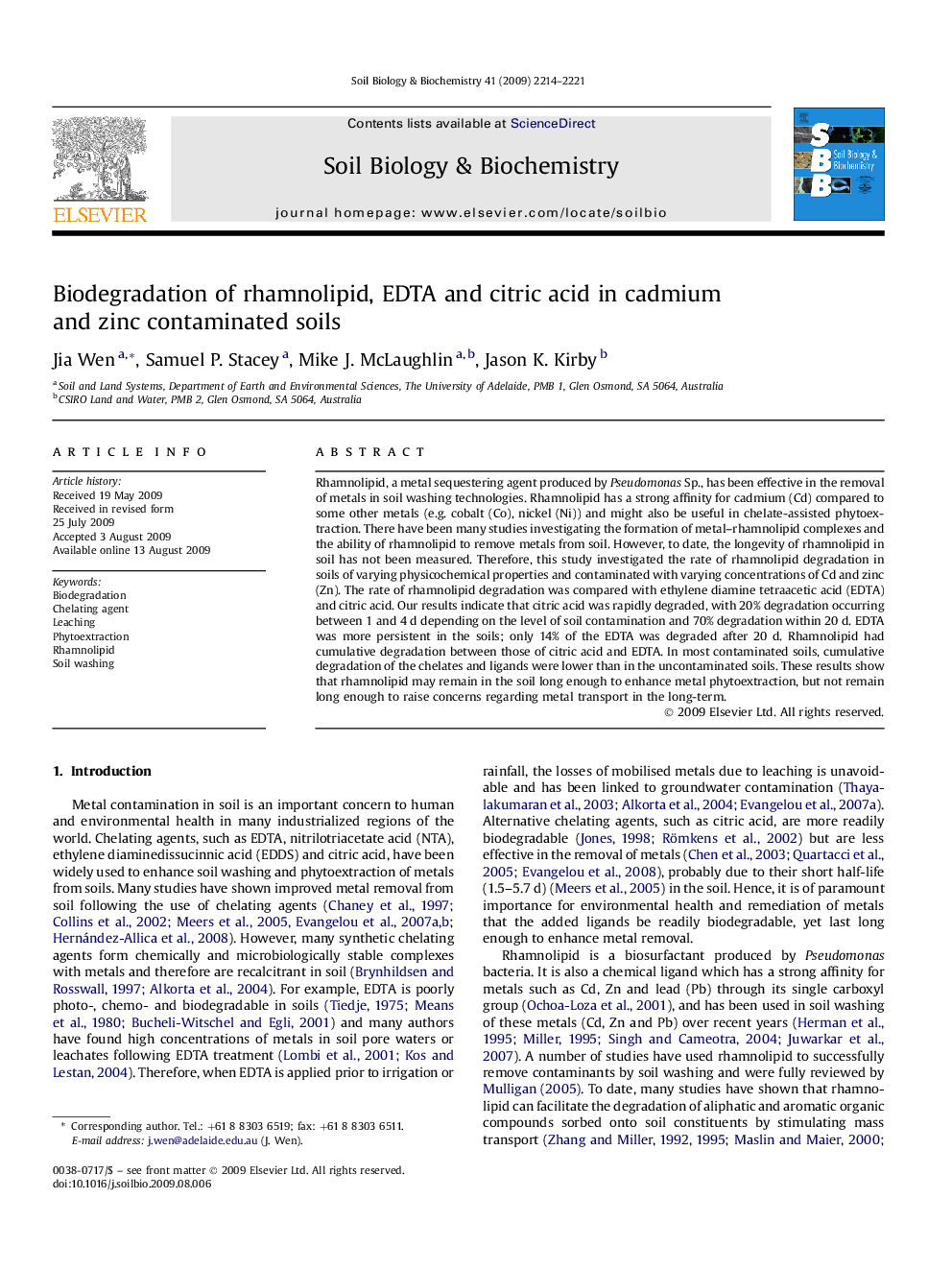| Article ID | Journal | Published Year | Pages | File Type |
|---|---|---|---|---|
| 2025989 | Soil Biology and Biochemistry | 2009 | 8 Pages |
Rhamnolipid, a metal sequestering agent produced by Pseudomonas Sp., has been effective in the removal of metals in soil washing technologies. Rhamnolipid has a strong affinity for cadmium (Cd) compared to some other metals (e.g. cobalt (Co), nickel (Ni)) and might also be useful in chelate-assisted phytoextraction. There have been many studies investigating the formation of metal–rhamnolipid complexes and the ability of rhamnolipid to remove metals from soil. However, to date, the longevity of rhamnolipid in soil has not been measured. Therefore, this study investigated the rate of rhamnolipid degradation in soils of varying physicochemical properties and contaminated with varying concentrations of Cd and zinc (Zn). The rate of rhamnolipid degradation was compared with ethylene diamine tetraacetic acid (EDTA) and citric acid. Our results indicate that citric acid was rapidly degraded, with 20% degradation occurring between 1 and 4 d depending on the level of soil contamination and 70% degradation within 20 d. EDTA was more persistent in the soils; only 14% of the EDTA was degraded after 20 d. Rhamnolipid had cumulative degradation between those of citric acid and EDTA. In most contaminated soils, cumulative degradation of the chelates and ligands were lower than in the uncontaminated soils. These results show that rhamnolipid may remain in the soil long enough to enhance metal phytoextraction, but not remain long enough to raise concerns regarding metal transport in the long-term.
